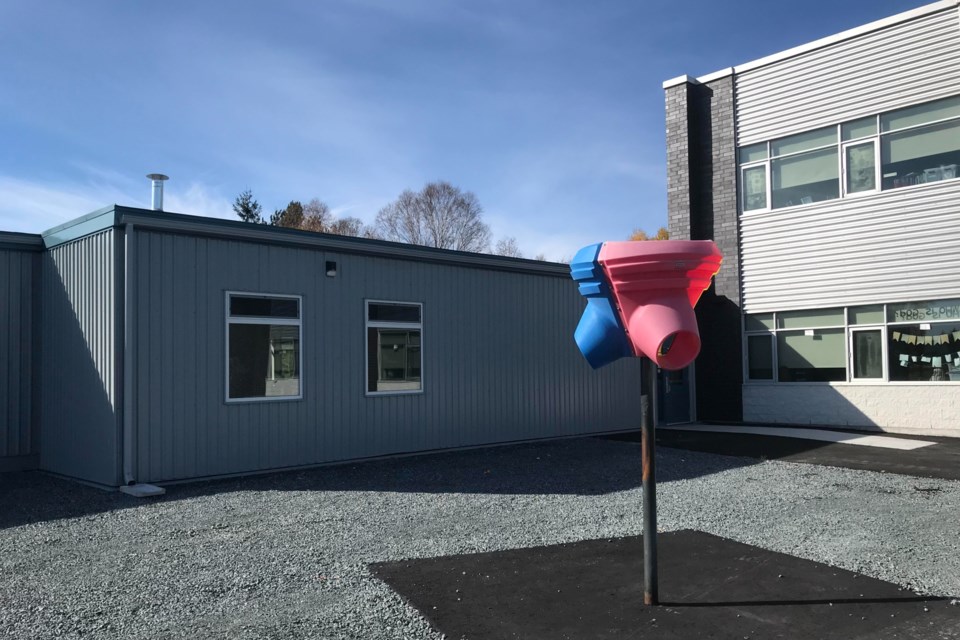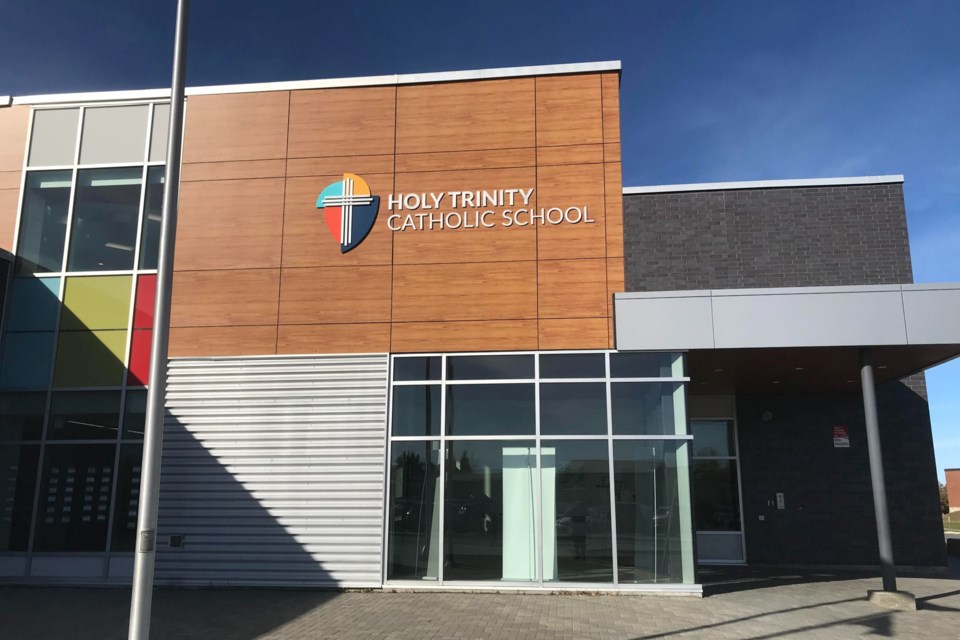Opened in 2015, just eight years ago, Holy Trinity Catholic Elementary School has recently seen the installation of two portable classrooms at a total cost of roughly $1.6 million to accommodate a large enrolment increase at the school.
Sudbury Catholic District School Board, which runs Holy Trinity, provided us with the following emailed explanation for the addition of two portables to the relatively new school.
“Holy Trinity Catholic Elementary School has become one of our fastest-growing educational communities,” said the statement.
“Holy Trinity was built in 2015 to accommodate 550 students. Since then, the student enrolment has increased from 508 students to 676 students. The necessity to introduce two portable classrooms at the school is a response to this increase in enrolment.”
Sudbury.com had reached out to the board, asking for an interview on the subject with a school board administrator, but we instead received the above brief emailed response, as well as a later clarification on the project’s total costs.
However, Sudbury Catholic board chair Michael Bellmore did later answer questions about the project after we reached out to him by phone.
Information included in the package for the Sept. 19 Sudbury Catholic board meeting shows that the enrolment at Holy Trinity went up by 44 students between the end of the last school year and the beginning of the current school year alone.
Bellmore said the capacity issues at the school have meant turning the library or “non-instructional learning spaces into learning spaces and instructional spaces to accommodate the student population that we have.”
Asked if the board could have foreseen this enrolment increase, Bellmore said he doesn’t think that would have been possible.
“We've had a slew of new Canadian citizens coming to Sudbury, which was not planned for — one doesn’t plan for that,” he said.
Bellmore adds that he also thinks that parents from outside of Holy Trinity’s catchment area looking for “excellent programming and excellent schools” have enrolled their children in the school.

Not your childhood portables
These aren’t the type of portables you might remember from your own childhood, hence the cost.
“They have to be hoisted into place, they have to be secured to the footings that the municipality insisted on us having,” Bellmore said.
“Then we have to wire in all the systems like wiring for the internet, as well as electrical —all of that needs to be connected to the main building.
“Part of the construction is to build a vestibule. People reading your article might go back to the old days when portables were kind of outside the school, which these technically are, where you had to go out a set of doors at the school and walk to your portable. We actually have a breezeway, so the students will never have to physically go outside of the school to get to the portables.”
Why portables?
The school board chair brings up several provincial government policies that have led to the Sudbury Catholic board installing portables instead of a permanent addition or an entirely new school for the New Sudbury area.
Bellmore said the province is currently only approving very limited funding for new JK-12 school construction.
The way the province determines “whether or not you have a viable need for a new building” is based on total classroom availability, he said.
However, because the board has empty classrooms elsewhere in its coverage area, the ministry deems “we’re not at full capacity,” Bellmore said.
He said portables are “the only projects that we’re permitted to do with the portfolio we’re currently maintaining.”
In a related topic, the Ontario Public School Boards Association (OPSBA) complained in early 2023 about the now six-year moratorium on accommodation reviews.
These reviews allowed school boards to study their demographics to determine if they need to close or merge schools, or recommend the building of new ones. They were often controversial, including locally.
OPSBA said while school closures can be “difficult and emotional,” they’re often necessary.
The province responded to national media reporting on the OPSBA statement by saying the government “is delivering $14 billion to upgrade existing schools and build new state-of-the-art schools across Ontario with a focus on STEM learning, improved accessibility, and technology."
Bellmore said the above issues are “province-wide, it’s not specific to Sudbury … There are municipalities that are larger than Sudbury that have a lot of issues with buildings that require closures and those kinds of things.
“Because the ministry isn't entertaining anything much in the way of construction projects right now, it makes it difficult to go back to them and say, ‘Hey, we need to add an addition to this particular school.’”
Construction delays and cost overruns
As stated above, the entire Holy Trinity portables project, including the cost of the portables themselves, came in at roughly $1.6 million.
A budget of $872,590 “inclusive of contingencies and miscellaneous expenses” was approved for the installation alone.
However, issues with construction (outlined in detail further below) mean the installation budget will exceed this amount by “no more than $75,000,” said a September report from the board.
“A final accounting of project costs will be reported at the conclusion of the project,” said the report.
The new portables were also supposed to open in time for the start of the new school year, but construction delays meant they didn’t open until Oct. 23.
The September board report outlines some of the issues encountered during the installation.
“The scope of work for this project included site preparation, installation of a foundation system and the connection to existing building systems and infrastructure for two new portables,” said the report.
The portable installation was designed using helical piles as a foundation and anchor point system. The design depth for installation of the piles was expected to be 10-30 feet, based on geo-technical assessments and discussion with the supplier of the piles.
“When installation of the helical piles began, the supplier could not achieve the required pressures to support the piles until they reached a depth of approximately 53 feet,” the report said.
“This issue could not have been discovered until the actual installation of piles occurred. The requirement to install the helical piles deeper than anticipated created unexpected cost and delays to project completion.”
The cost increases stemmed from the additional materials and installation time to install the helical piles.
“The time delays caused by the issue with the helical piles means that the portable installation was not completed in time for the start of school,” said the report.
“The revised installations schedule now has the portables being delivered to site on September 29. The final installation of the portables and connections to the school will take several weeks after delivery and occupancy of the portables is now expected by October 23.”
Heidi Ulrichsen is Sudbury.com’s assistant editor. She also covers education and the arts scene.
